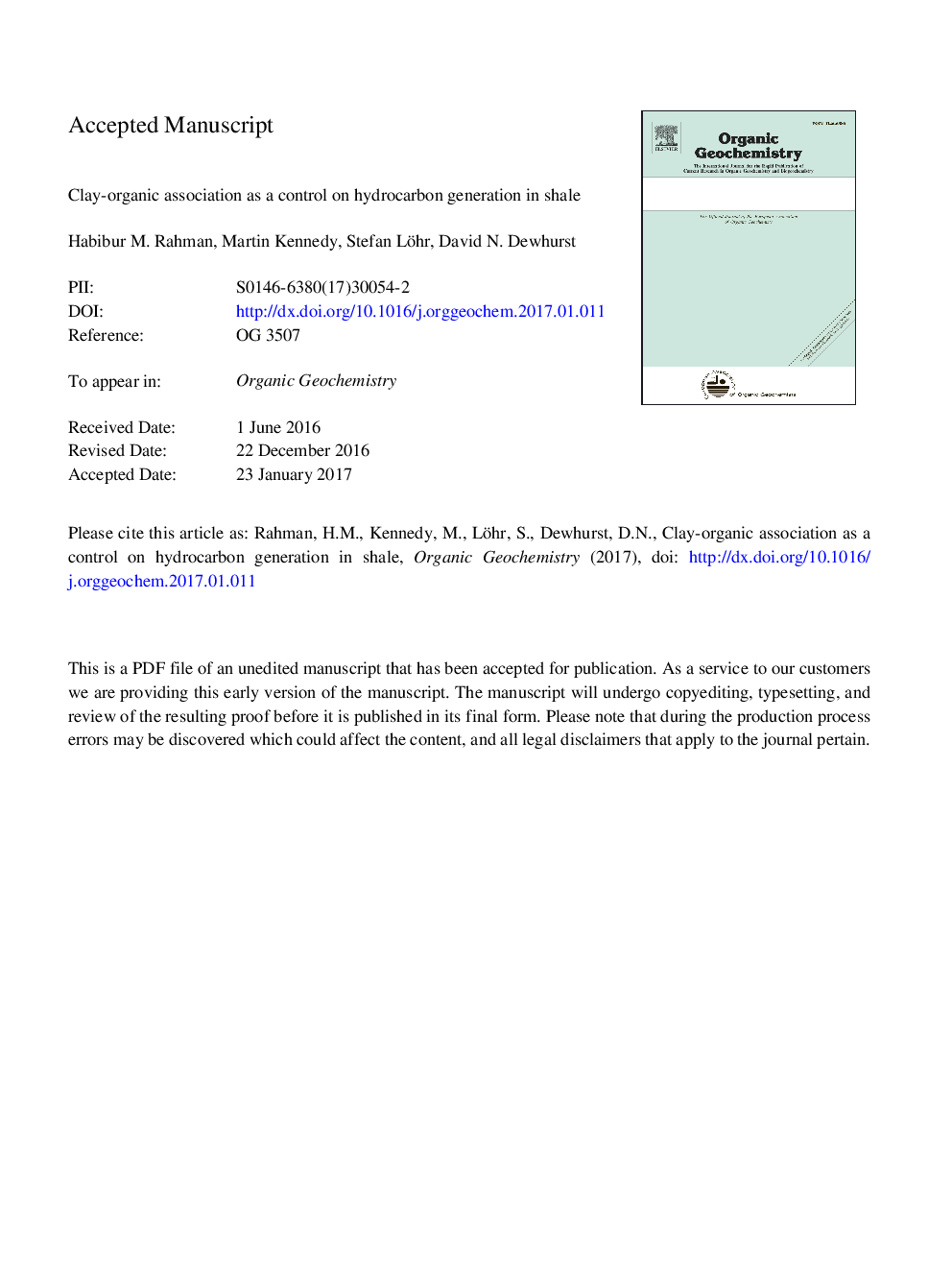| کد مقاله | کد نشریه | سال انتشار | مقاله انگلیسی | نسخه تمام متن |
|---|---|---|---|---|
| 5161474 | 1502258 | 2017 | 54 صفحه PDF | دانلود رایگان |
عنوان انگلیسی مقاله ISI
Clay-organic association as a control on hydrocarbon generation in shale
ترجمه فارسی عنوان
ترکیب آلی-آلی به عنوان کنترل بر تولید هیدروکربن در شیل
دانلود مقاله + سفارش ترجمه
دانلود مقاله ISI انگلیسی
رایگان برای ایرانیان
کلمات کلیدی
موضوعات مرتبط
مهندسی و علوم پایه
شیمی
شیمی آلی
چکیده انگلیسی
Programmed pyrolysis experiments investigating the influence of the mineral matrix on hydrocarbon generation from organic compounds have shown inconclusive results in past studies. This study tests the hypothesis that the inhibitory vs catalytic influence of clay minerals is dependent on the physical association of the mineral matrix with organic compounds by comparing natural samples from two shale formations with different mineral-organic associations. Samples from the Miocene Monterey Formation have a greater area of surface contact between organic matter and mineral surfaces when compared to the more particulate texture and discrete nature of the organic matter in the samples from the Permian Stuart Range Formation. Comparison of kerogen extracts to the whole rock (containing mineral and organic matter) samples during programmed pyrolysis shows higher hydrocarbon generation from isolated kerogen compared to the whole rock sample it was extracted from in both the Monterey and the Stuart Range Formation samples. The difference between extracted kerogen and whole rock samples is greater and more variable (56-210 mgHC/gTOC) in the Stuart Range than the Monterey Formation (85-142 mgHC/gTOC) implying greater hydrocarbon retention by the free mineral surfaces. The temperature of maximum hydrocarbon generation (Rock-Eval Tmax) is greater in whole rock than kerogen isolates (20 °C mean) in the Monterey Formation samples, but shows negligible difference (2 °C mean) in the samples from the Stuart Range Formation. Standard kerogen typing using Rock-Eval pyrolysis data places the same kerogen as Type II to Type III on a modified Van Krevelen diagram depending whether it is isolated or pyrolysed with its mineral host. This study identifies that not only the bulk mineralogy and kerogen type but also the degree of surface contact of the phases influence hydrocarbon generation.
ناشر
Database: Elsevier - ScienceDirect (ساینس دایرکت)
Journal: Organic Geochemistry - Volume 105, March 2017, Pages 42-55
Journal: Organic Geochemistry - Volume 105, March 2017, Pages 42-55
نویسندگان
Habibur M. Rahman, Martin Kennedy, Stefan Löhr, David N. Dewhurst,
